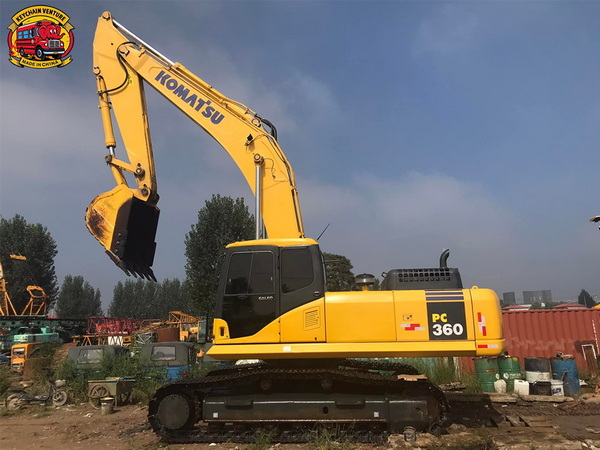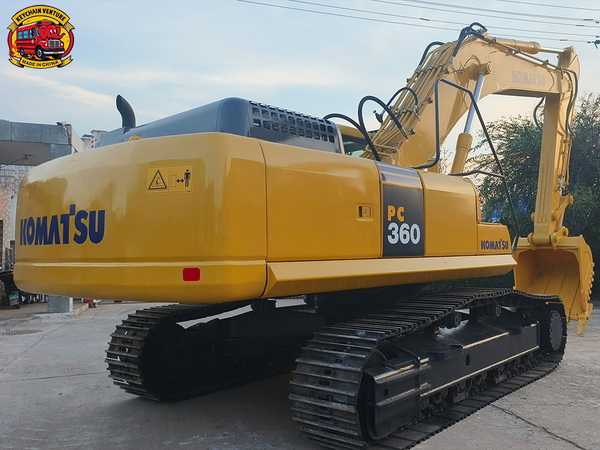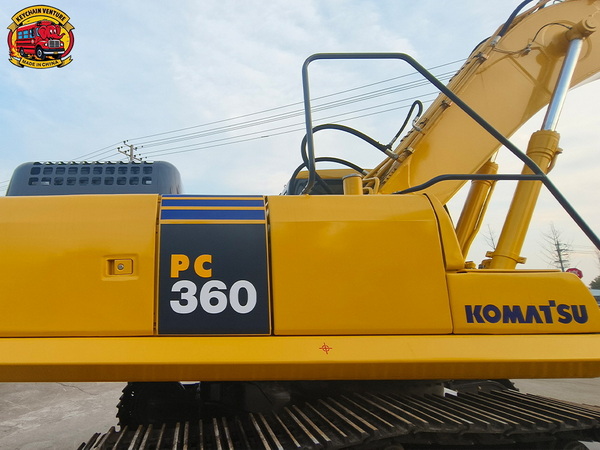Views: 222 Author: Amanda Publish Time: 2025-10-17 Origin: Site








Content Menu
● Understanding Trimble GPS Systems for Excavators
● Components of Trimble GPS Systems for Excavators
● Setting Up Trimble GPS on an Excavator
>> Step 1: Installation of Hardware Components
>> Step 2: Connecting Equipment
>> Step 3: Uploading Design Files
>> Step 4: Calibration and Machine Setup
● Operating Trimble GPS on the Excavator: Step-by-Step
>> Project Selection and Machine Configuration
>> Engaging Grade Control Mode
>> Adjusting Settings On-the-Fly
● Advanced Features and Functionalities
>> Automatic Boom and Bucket Control
>> Augmented Reality Enhancements
>> Collision Avoidance and Safety Zones
>> Tiltrotator and Attachment Integration
● Practical Tips for Using Trimble GPS with Used Excavators
● Integration with Project and Fleet Management
● Frequently Asked Questions (FAQ)
>> 1. How accurate is Trimble GPS on excavators?
>> 2. Can Trimble GPS be installed on used excavators?
>> 3. What types of excavator attachments are supported by Trimble GPS?
>> 4. How does Trimble Earthworks improve operator efficiency?
>> 5. Is operator training required for using Trimble GPS systems?
Using Trimble GPS technology on excavators revolutionizes earthmoving by delivering precision, efficiency, and safety. This guide explains how operators can leverage Trimble GPS systems to enhance productivity, reduce errors, and maximize the capabilities of excavators—especially valuable when working with used excavators outfitted with advanced GPS technology. This comprehensive guide offers detailed insight into setup, operation, and practical tips to help professionals get the most out of their GPS-equipped excavation machinery.

Trimble GPS integrates satellite positioning, sensors, and intelligent software to provide real-time 3D mapping of excavation sites. Operators receive constant feedback on bucket and boom positions relative to the design plans, significantly improving accuracy. These systems use GNSS (Global Navigation Satellite Systems) technology, combining GPS, GLONASS, and other satellite signals to achieve precise positioning.
Trimble Earthworks is a popular semi-automatic control platform designed specifically for excavators. It automates boom and bucket movements based on GPS data, enabling excavators to dig according to precise design specifications. The system supports varying configurations, such as 2D, which provides height and slope control, and more advanced 3D GNSS systems for complex grading tasks. It accommodates all excavator types, whether brand new or used excavators, enhancing performance and precision regardless of machine age or model.
To understand how to use Trimble GPS effectively, it is important to recognize its core components:
- GPS Receivers and Antennas: Mounted on the excavator's boom, stick, or bucket, these collect satellite signals to determine machine position.
- Inertial Measurement Units (IMUs): Measure orientation, tilt, and motion to complement GPS accuracy.
- Operator Display Console: A rugged touchscreen interface inside the cab where operators view real-time data and control the system.
- Control Software (Trimble Earthworks): Integrates positioning data with design models to guide operator actions or control hydraulic outputs semi-automatically.
- Communication Units: Facilitate wireless data exchange between the excavator and site management software.
Proper installation is the foundation for system accuracy and reliability. GPS antennas and IMUs must be securely mounted to minimize vibration and maintain clear sightlines to the sky. Typically, antennas are placed on the boom or stick where obstructions are minimal. Sensors should be checked to prevent interference with hydraulic lines or moving parts.
All sensors and receivers connect to the operator control console, usually located inside the cab. Professional wiring ensures a durable setup resistant to rough jobsite conditions. Power supplies and connections must be secure as interruptions could disrupt the system during use.
Excavation or grading projects come with digital design files in 3D CAD or compatible formats. These files define cut and fill boundaries, slopes, and precise depths. Operators upload project files to the Trimble Earthworks system via USB drives or wireless cloud transfer before work begins.
Each excavator model has unique bucket dimensions and boom geometry. Calibration involves entering exact measurements into the system and performing sensor alignments to synchronize machine movement with GPS data. Operators must also configure system parameters for attachments like tiltrotators, which add joint mobility affecting sensor feedback.
Before excavation starts, operators run diagnostics to verify signal strength, sensor integrity, and software functionality. The Trimble system indicates readiness with clear visual cues, often a green GPS satellite icon on the display.

After starting the excavator engine, launch the Trimble Earthworks software on the console. Wait until the system acquires GPS satellite signals. A green status indicator means the positional data is reliable and the system is ready for excavation.
Select the current job from the project list, ensuring the design file matches the worksite specifications. Confirm machine settings such as bucket type and size, boom length, and any special attachments installed. Accurate inputs here directly affect excavation precision.
Enable the grade control function that uses GPS data to guide the boom and bucket. In automatic or semi-automatic modes, the system adjusts hydraulic actions to keep excavation within design tolerances. Operators maintain control over movement speed and direction while benefiting from computer-assisted depth and slope guidance.
Operators monitor a 3D graphical interface showing the excavator position relative to the design model. Color codes indicate if the bucket is digging above, below, or exactly on grade. The system also displays cut/fill volumes to track progress.
Depending on site conditions or project changes, operators can modify depth offsets, slopes, and other parameters instantly via touchscreen controls. This flexibility accommodates field variations without needing design file edits.
After each work session, save completed excavation data. This information helps site supervisors track progress, compare actual digs against models, and generate reports. Wireless data transfer allows integration with broader project management systems such as Trimble WorksManager.
One of Trimble Earthworks' standout capabilities is automatic control of boom and bucket hydraulics. The system actively adjusts bucket angles and arm positions to maintain precise slopes and depths, reducing manual corrections and operator fatigue. This leads to faster and more consistent completion of excavation tasks.
Newer Trimble systems offer augmented reality (AR) visualization. This overlays the project's 3D design on the real-world view from the cab, allowing operators to “see” the finished grade before digging. AR improves situational awareness and minimizes mistakes caused by misinterpretation.
Trimble GPS technology supports setting virtual safety zones around critical infrastructure or underground utilities. The system alerts or prevents the operator from breaching these zones, safeguarding equipment and nearby assets, and enhancing job site safety.
Many used excavators are upgraded with tiltrotator attachments for increased versatility. Trimble systems accommodate these by tracking tilt angles and integrating them with GPS data, enabling complex digging angles and precise grading with rotating buckets or tools.
Used excavators represent a significant investment in commercial vehicle fleets, and integrating Trimble GPS can extend their functionality and value.
- Verify Compatibility: Confirm that the excavator hydraulic systems and electronic controls can interface with Trimble equipment before installation.
- Thorough Calibration: Older machines require precise sensor calibration to account for wear or non-standard bucket sizes.
- Upgrade Software Regularly: Keeping Trimble Earthworks updated ensures new features and improved stability.
- Operator Training: Even experienced operators benefit from training specific to Trimble GPS controls to utilize all functionality efficiently.
- Routine Maintenance: Protect GPS antennas and sensors from damage or dirt, and inspect cabling frequently to avoid signal disruptions.
Trimble WorksManager is an example of software designed to collect and synchronize data across entire fleets, including used excavators fitted with GPS systems. Real-time data sharing allows supervisors to monitor project progress, machine utilization, and performance metrics from remote locations, streamlining decision-making and resource allocation.
Utilizing Trimble GPS on excavators—whether brand new or used—offers transformative benefits in precision, efficiency, and safety. From initial setup to daily operations, the system delivers real-time guidance that empowers operators to achieve exact excavation designs with less rework and faster project completion. Advanced features such as automatic hydraulic control, augmented reality, collision avoidance, and compatibility with tiltrotator attachments further elevate productivity and safety on any job site. For companies aiming to optimize their earthmoving operations, integrating Trimble GPS technology into their used excavator fleet offers a cost-effective pathway to technology-driven efficiency and accuracy, enhancing both performance and competitiveness.

Trimble GPS systems typically provide positioning accuracy within a few centimeters. This precision enables operators to dig closely to design specifications, minimizing material waste and costly rework. Accuracy depends on sensor calibration, satellite signal quality, and environmental factors such as obstructions or electromagnetic interference.
Yes, Trimble GPS and Earthworks can be retrofitted on used excavators. Installation requires professional assessment to ensure mechanical and electrical compatibility. With proper installation and calibration, used excavators gain advanced capabilities, enhancing their value and extending operational life.
Trimble technology supports a broad range of attachments including standard buckets, tilting buckets, and tiltrotators from leading manufacturers like Engcon, Rototilt, and Steelwrist. This enables operators to perform complex digging and grading tasks with versatile tooling controlled via GPS.
By automating boom and bucket movements based on real-time GPS data, Trimble Earthworks reduces operator fatigue and error. This semi-automatic guidance improves digging speed and accuracy, increasing productivity by up to 40%. Operators focus more on controlling machine movement while the system manages grading precision.
Yes, training is essential to maximize the benefits of Trimble GPS systems. Operators must understand system functions, calibration procedures, and troubleshooting techniques. Many vendors and dealers provide comprehensive training programs to ensure proficient use and safe operation.